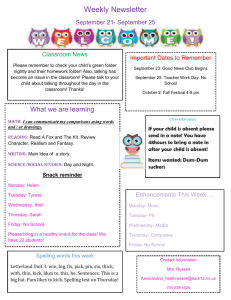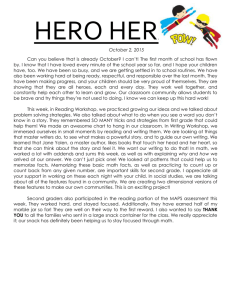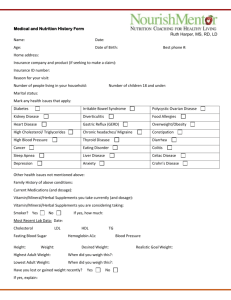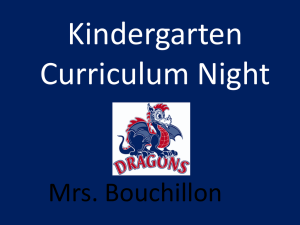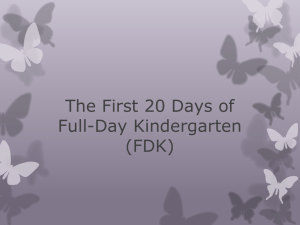Health Lesson Plan
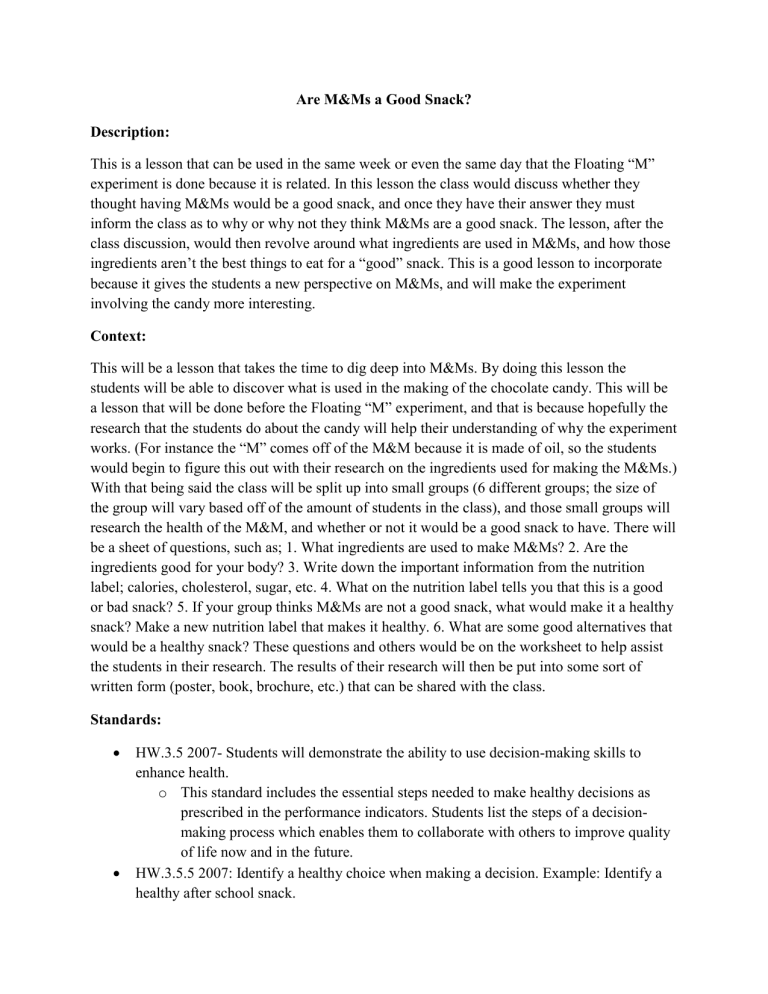
Are M&Ms a Good Snack?
Description:
This is a lesson that can be used in the same week or even the same day that the Floating “M” experiment is done because it is related. In this lesson the class would discuss whether they thought having M&Ms would be a good snack, and once they have their answer they must inform the class as to why or why not they think M&Ms are a good snack. The lesson, after the class discussion, would then revolve around what ingredients are used in M&Ms, and how those ingredients aren’t the best things to eat for a “good” snack. This is a good lesson to incorporate because it gives the students a new perspective on M&Ms, and will make the experiment involving the candy more interesting.
Context:
This will be a lesson that takes the time to dig deep into M&Ms. By doing this lesson the students will be able to discover what is used in the making of the chocolate candy. This will be a lesson that will be done before the Floating “M” experiment, and that is because hopefully the research that the students do about the candy will help their understanding of why the experiment works. (For instance the “M” comes off of the M&M because it is made of oil, so the students would begin to figure this out with their research on the ingredients used for making the M&Ms.)
With that being said the class will be split up into small groups (6 different groups; the size of the group will vary based off of the amount of students in the class), and those small groups will research the health of the M&M, and whether or not it would be a good snack to have. There will be a sheet of questions, such as; 1. What ingredients are used to make M&Ms? 2. Are the ingredients good for your body? 3. Write down the important information from the nutrition label; calories, cholesterol, sugar, etc. 4. What on the nutrition label tells you that this is a good or bad snack? 5. If your group thinks M&Ms are not a good snack, what would make it a healthy snack? Make a new nutrition label that makes it healthy. 6. What are some good alternatives that would be a healthy snack? These questions and others would be on the worksheet to help assist the students in their research. The results of their research will then be put into some sort of written form (poster, book, brochure, etc.) that can be shared with the class.
Standards:
HW.3.5 2007- Students will demonstrate the ability to use decision-making skills to enhance health.
o This standard includes the essential steps needed to make healthy decisions as prescribed in the performance indicators. Students list the steps of a decisionmaking process which enables them to collaborate with others to improve quality of life now and in the future.
HW.3.5.5 2007: Identify a healthy choice when making a decision. Example: Identify a healthy after school snack.
Materials:
6 bags of M&Ms (one for each group, so they can look at the nutrition label on the back)
Notebooks (for recording the information they find)
Writing utensils
A computer (for additional research)
Time:
The time for this lesson should be around 30-45 minutes. It shouldn’t take that long for the group to decide whether or not they think M&Ms make a good snack or not, and once that decision is made then they can begin their research. The research shouldn’t take that long either because they will have a sheet with guiding questions that they should be answering. Making their artifact with the information they find will be what takes the longest. Split the time up as such: 5 minutes to decide if the candy is a good and healthy snack, 15 minutes to research and answer the guiding questions on the worksheet, and then 10-15 minutes recording the information onto the artifact that they will present as a group to the class.
Procedure:
Divide the class into six different groups with an even (or as close to even as possible) amount of students
Once the class is divided have them get together with their group, and have them make a decision about this question; Are M&Ms a good/healthy snack?
After about five minutes go around to the groups and ask them what they are thinking, and after they explain themselves hand them the worksheet (that has questions and instructions on them) to work on
Give the students time to research and work on the questions from the worksheet, and once they have finished that give them time to work on the artifact
Once each group is done with their artifact have each group present to the class their findings o Their presentation will be them explaining why or why not M&Ms are a good/healthy snack based off the information that they found
After all the presentations bring it back into a big class discussion about the health of
M&Ms
The final part will be explaining why we spent time worrying about M&Ms and whether they are healthy or not, and relate it to the fact that the new science experiment that we will be doing in class deals with M&Ms (scientist need to know all the information before doing an experiment, and knowing about M&Ms and what they are made of is an important part in the experiment)
Evaluation/Assessment:
The evaluation/assessment for this particular assignment/lesson will be the group artifact that is made and the presentation that they give along with it. Both of those things will show whether or not the students understand some of the basic health concepts, such as; how to read a nutrition label and know whether or not it is good or bad. There will be no test or quiz over this specific part, but during the presentation each group member must speak. This will provide information into whether or not they helped with the research and the construction of the artifact because if they did help then they should be able to contribute to the presentation and show that they know what is going on.
Adaptations:
This lesson can be adapted in different ways. If there is a student who has trouble writing or using their hands then one of the other students in the group can record for them so they too can have the answers that the group has come up with written down. If the student has trouble focusing then they can research for a little bit, so they feel like they are contributing to the group, and then maybe start on the artifact. They can be doing something hands on (being creative with the artifact) and they will still be assisting the group because eventually they all have to work on the artifact to present. If they student has trouble speaking in front of everyone then they can have a separate evaluation that is one-on-one with the teacher. They will get a chance to present what they learned from the research to show that they were helping and participating, and that they understand what is going on with the health of M&Ms.
What’s next?
The next step with this lesson is that it is a good introduction into the health and nutrition of food. It would be a good lesson to not only introduce M&Ms a little better before the experiment, but it would be a good introduction into what really makes a healthy snack. It could be an introduction lesson into a more complicated lesson, such as; creating a menu for a family. So what makes a good breakfast, lunch, dinner, but more importantly what makes a good/healthy snack.
Reflection of Lesson:
This Health lesson, “Are M&Ms a Good Snack?” is a lesson that I did not actually do during the course of Block B, but it is one that I could see myself using in the future. I feel as if it goes really well with “The Floating M” experiment, and then it easily transitions into the Social
Studies lesson, “The Geography of Chocolate.” With that being said I think this lesson could easily be successful in a classroom because chocolate is something any kid is willing to learn about since the majority of them think there is nothing better than some chocolate as a snack.
With the growing rise of obesity I think this lesson would be very relevant in a classroom because I think it is important for kids to learn about healthy snack alternatives, and to know that only eating sweets such as chocolate is bad for them. By looking at the nutrition label they will learn why it is bad, but also come to learn that every once in a while a little chocolate is okay to fulfill their sweet tooth. Since I haven’t actually done this lesson I don’t know what could go wrong or what would go right, but I can make a guess. I think the only thing that would be a problem with this lesson is actually having the M&Ms packages out, and them being filled. I could see the kids just wanting to eat the M&Ms and not really paying attention to what they should be, like the nutrition label and what everything on it means. That being said it would be an easy fix as well; just have empty M&M packages and if they get their work done then give each kid a small handful of the M&Ms (can’t give too many if the point of all this is to teach them that there are much healthier snacks out there). What I think would go right with this contradicts what would go wrong in a way, but I think by having something such as chocolate and M&Ms that they’re researching would hold their interest more. It’s something they are familiar with and something most kids love, so they would be more willing to research about it.
Hopefully in the future I can use this lesson plan, and hopefully it will work in the way that I hope for it to.
